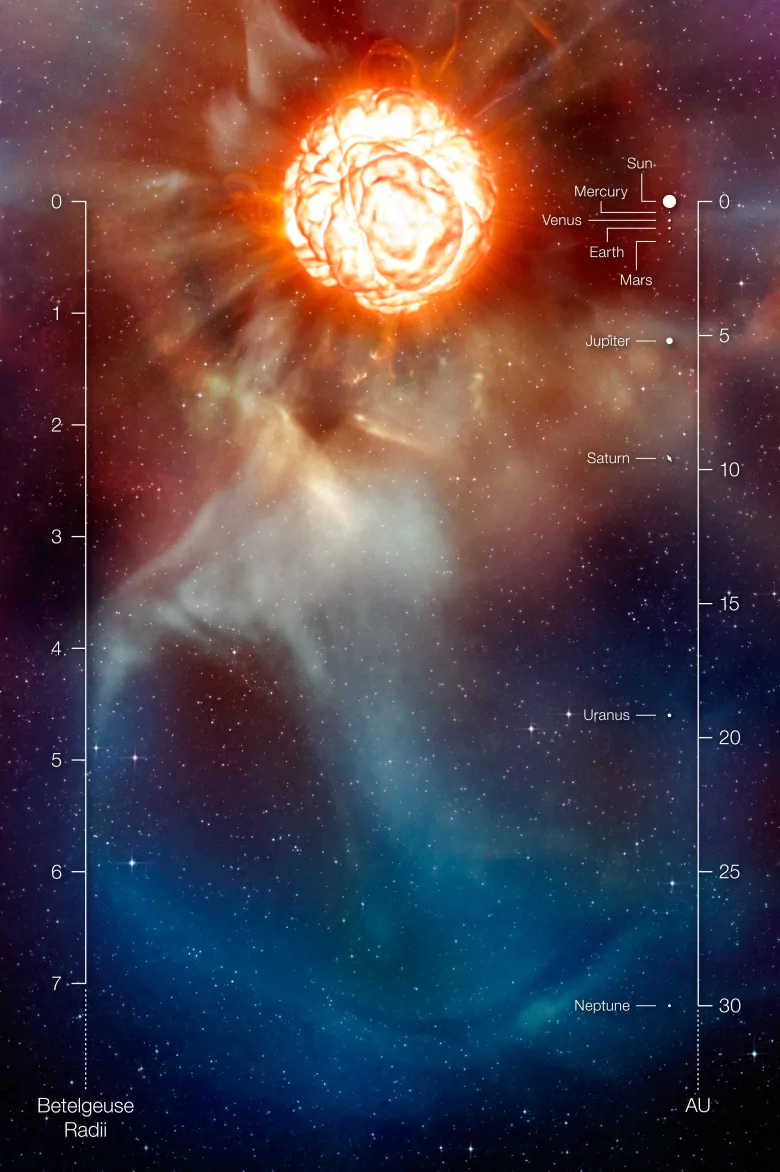Hopes for supernova are dimming as Betelgeuse brightens

It appears that the hopes of people who wanted a nearby star to explode have been dashed.
After weeks of unprecedented dimming, Betelgeuse — a star in the constellation Orion — is beginning to brighten again.
Both professional and amateur astronomers had been keeping a close eye on the unusual dimming of the red supergiant star, as its brightness decreased to the lowest in recorded observational history. Some had hoped that its fading was indicative of an impending explosion, a supernova.
Am I the only one who is moderately disappointed that Betelgeuse isn’t going supernova this year (or this millennium)?<a href=”https://t.co/RFpNlUSbaz”>https://t.co/RFpNlUSbaz</a> <a href=”https://t.co/cwnRGV8JRj”>pic.twitter.com/cwnRGV8JRj</a>
—@beckerkw
But the fact that Betelgeuse is brightening is exactly what professional astronomers were expecting.
Betelgeuse is a fascinating star to astronomers. The red supergiant is 14,000 times more luminous than our sun and roughly 1,400 times larger. It is surrounded by dust and gas that, if it were at the centre of our solar system, it would stretch all the way to Neptune.
It is also a semi-regular variable, meaning that its brightness waxes and wanes in cycles.
When red supergiants die, they do so in a spectacular fashion, exploding as a supernova. And while Betelgeuse is at the end of its lifespan, astronomers believe that it still has roughly 100,000 years or more to go. But because these types of stars aren’t completely understood, they can’t be certain.
And that’s where the hope lay with Betelgeuse’s dimming.
But astronomers had hypothesized that two of its three cycles — one that is roughly 430 years, one that is roughly six years and one that is roughly between 100 to 180 days — had converged, leading to its extreme dimming. And they believed that somewhere at the end of February, it would begin to recover.
‘Still very cautious’
So Betelgeuse’s brightening is right on schedule, which supports their hypothesis. However, they’re still waiting for more data.
“At this point we’re still very cautious about screaming, ‘Oh, we were right! We know what’s happening!'” said Stella Kafka, chief executive officer of the American Association of Variable Star Observers, an organization that monitors variable stars. “But the data shows us Betelgeuse’s brightness is increasing.”
Continuing our <a href=”https://twitter.com/hashtag/Betelgeuse?src=hash&ref_src=twsrc%5Etfw”>#Betelgeuse</a> saga: 5-day means from the <a href=”https://twitter.com/AAVSO?ref_src=twsrc%5Etfw”>@AAVSO</a> database. Are we recovering? <a href=”https://t.co/1vm3OKBWJa”>pic.twitter.com/1vm3OKBWJa</a>
—@stellakafka
Though it appears that Betelgeuse won’t go supernova, it’s provided a wealth of information on a class of stars that aren’t well understood. And that, in and of itself, is exciting, Kafka said.
As well, the strangeness of Betelgeuse has been widely reported, and it’s resulted in non-astronomers looking at the night sky, something that Kafka thinks is remarkable.
“It’s really exciting that we’re all in this together. It’s one of those things that the whole community, the whole world is looking at Betelgeuse trying to figure out what’s going on,” she said. “We’re learning from it.”
Another important takeaway from the recent activity on Betelgeuse is that it serves as a reminder that the sky isn’t as static as we may think; that it can change even in our lifetimes, Kafka said. And studying something relatively nearby that is evolving sheds some light on how our solar system and life on our planet may have begun.
“That’s why astronomy is so interesting to everybody. It satisfies this fundamental question … where do we belong?”





